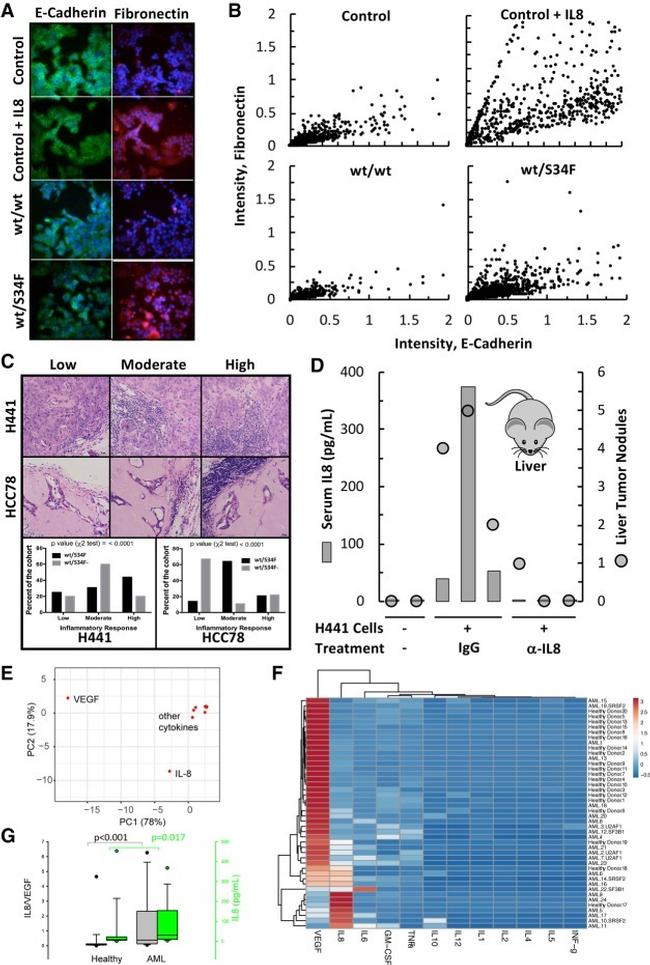Search
Invitrogen
IL-8 (1-77) (CXCL8) Monoclonal Antibody (NAP II), eBioscience™
{{$productOrderCtrl.translations['antibody.pdp.commerceCard.promotion.promotions']}}
{{$productOrderCtrl.translations['antibody.pdp.commerceCard.promotion.viewpromo']}}
{{$productOrderCtrl.translations['antibody.pdp.commerceCard.promotion.promocode']}}: {{promo.promoCode}} {{promo.promoTitle}} {{promo.promoDescription}}. {{$productOrderCtrl.translations['antibody.pdp.commerceCard.promotion.learnmore']}}
产品信息
BMS136
种属反应
已发表种属
宿主/亚型
分类
类型
克隆号
抗原
偶联物
形式
浓度
纯化类型
保存液
内含物
保存条件
运输条件
RRID
产品详细信息
Description: The antibody can be used to stain acetone-fixed cryostat sections or cell smears.
BMS136FI is suitable for intracellular staining of IL-8.
Interleukin-8 selectively stimulates the ability of neutrophils and T-lymphocytes to invade injured or inflamed tissue. IL-8 also known as CXCL8 that is purified from peripheral blood monocytes is a 10 kDa protein showing at least 4 variant forms (77, 72, 70, and 69 amino acids, respectively) which differ in the length of the N-terminal and readily form dimers in solution. Two cystin-bridges are essential for the biological activity of IL-8.
Exogenous stimuli like LPS, but also IL-1, TNF-alpha and TNF-beta induce the secretion of IL-8 in a variety of different cell types including monocytes, endothelial and epithelial cells, peripheral blood mononuclear cells, dermal fibroblasts, keratinocytes, neutrophils, hepatocytes, synovial cells, and T-lymphocytes.
The activities of IL-8 are not species-specific. Human IL-8 is also active in rodent and rabbit cells and differs from all other cytokines in its ability to specifically activate neutrophil granulocytes. This chemokine activates multiple intracellular signaling pathways downstream of two cell-surface, G protein-coupled receptors (CXCR1 and CXCR2). The property of IL-8 to stimulate movement of neutrophils across endothelial monolayers in vitro supports the concept of a central role for this molecule in the accumulation of neutrophils at inflammatory lesions in vivo.
Applications Tested: Immunohistochemistry (Frozen), Flow Cytometry (Intracellular Staining).
Purity: >99%.
靶标信息
Interleukin 8 (IL-8, CXCL8) is a 72 amino acid pro-inflammatory factor which belongs to the CXC subfamily of chemokines, and are bound by the cell surface receptors IL-8RA and IL-8RB. IL-8 functions as a chemoattractant and potent angiogenic factor. The expression and secretion of IL-8 can be induced by diverse inflammatory stimuli in many cells, including macrophages and endothelial cells. In endothelial cells, IL-8 is present in storage vesicles called Weibel-Palade bodies. IL-8, first isolated from osteosarcoma cells, contains the ELR-motif (N-terminal Glu-Leu-Arg amino acid sequence) and signals through the CXCR1 and CXCR2 receptors. Previous nomenclature for IL-8 includes neutrophil activating protein 1 (NAP-1), granulocyte chemotactic protein 1 (GCP-1), monocyte-derived neutrophil-activating peptide (MONAP) and protein 3-10C. IL-8 and ten other members of the CXC chemokine gene family form a chemokine gene cluster in a region mapped to chromosome 4q. Cancer studies have demonstrated a role for IL-8 in the angiogenesis and growth of tumours, and IL-8 is believed to play a role in the pathogenesis of bronchiolitis, a common respiratory tract disease caused by viral infection.
仅用于科研。不用于诊断过程。未经明确授权不得转售。
生物信息学
蛋白别名: alveolar macrophage chemotactic factor I; ANX7; beta endothelial cell-derived neutrophil activating peptide; beta-thromboglobulin-like protein; C-X-C motif chemokine 8; Chemokine (C-X-C motif) ligand 8; Emoctakin; GCP-1; Granulocyte chemotactic protein 1; IL-8; ILN; Interleukin; interleukin 8; Interleukin-8; Interleukin8; lung giant cell carcinoma-derived chemotactic protein; lymphocyte derived neutrophil activating peptide; MDNCF; MONAP; Monocyte-derived neutrophil chemotactic factor; Monocyte-derived neutrophil-activating peptide; NAP-1; neutrophil-activating peptide 1; Neutrophil-activating protein 1; Protein 3-10C; RP11-537A6.8; small inducible cytokine subfamily B, member 8; SNX; SYNEXIN; T-cell chemotactic factor; tumor necrosis factor-induced gene 1
基因别名: CXCL8; GCP-1; GCP1; IL8; LECT; LUCT; LYNAP; MDNCF; MONAP; NAF; NAP-1; NAP1
UniProt ID: (Human) P10145
Entrez Gene ID: (Human) 3576




